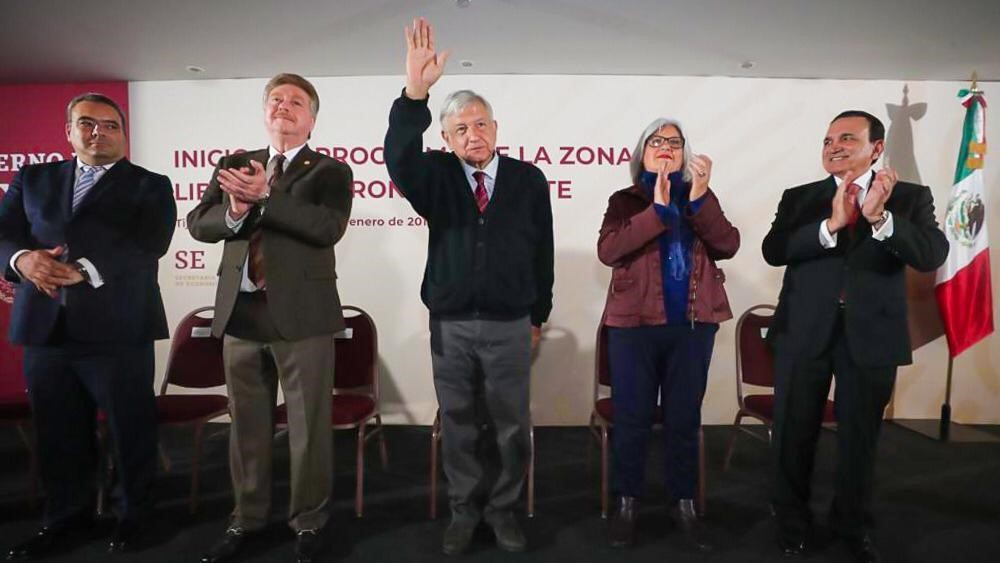January 17, 2019
President López Obrador visited Tijuana earlier this month to present a new program he calls Zona Libre or “Free Zone” which aims to encourage economic development along Mexico’s northern border. This decree is now in effect through 2020.
The Free Zone covers the entire 1954 mile border with the U.S. and an area of 12 to 16 miles from the international boundary into Mexico. This includes 44 municipalities among Mexico’s six border states which includes Tijuana, Tecate, Mexicali, Rosarito, and Ensenada in the Baja region.
With this program, President López Obrador intends to encourage border residents to increase their domestic consumption to boost the local economy. With an overall economic growth of 3.1 percent from 2013 to 2017 and exceeding the national average of 2.6 percent, Mexican Secretary of Economy Gabriela Márquez Colin stated that the administration plan is to incentivize growth even further.
The Free Zone program includes a series of incentives for Mexico’s northern border including:
- Reduced value added tax (IVA) from 16% to 8%
- Reduced corporate income tax (ISR) from 30% to 20% (restrictions apply)
- Matching fuel and electricity rates to be competitive with the U.S. prices in U.S. cities along the border
- Doubled the minimum wage to $176 pesos per day (about $9 USD)
President López Obrador will return to Baja California in three months to evaluate results and make appropriate revisions as part of his national economic development plan. The Chamber’s analysis of the program and feedback provided from the business community is positive. The President’s focus on the border region and acknowledgement as an economic engine gives us great optimism. We will continue to monitor and evaluate impacts in order to provide comments to the Administration.
To review the Free Zone Program Decree by President López Obrador, click here (this document is only available in Spanish).To review Deloitte’s strategic analysis of the program, click here.
